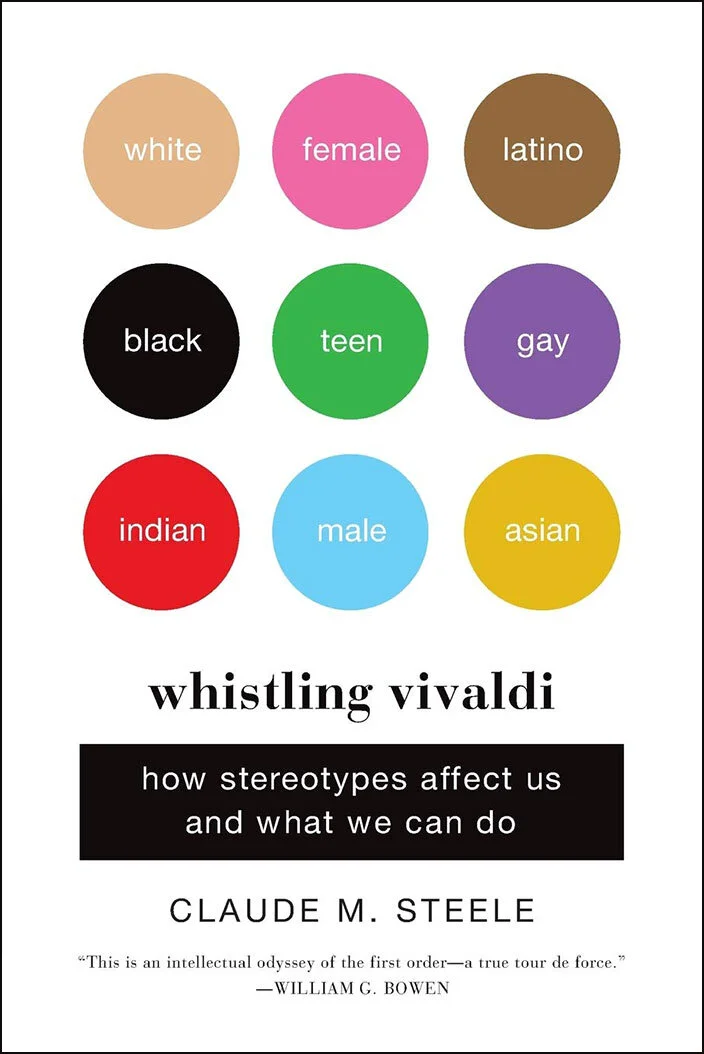“Whistling Vivaldi” by Claude M. Steele
Whistling Vivaldi: How Stereotypes Affect Us and What We Can Do
By Claude M. Steele
2011
256 pages. Audio: 6 hours and 52 minutes
Nonfiction
—
The title of Whistling Vivaldi by Columbia University’s Claude Steele is comes from the experience of an African-American graduate student who, when walking down the street of a major American city, would notice people cross to the other side of the street to avoid him, thinking he might be a gang member. So as he was walking down the street he started whistling the familiar classical tune, Vivaldi’s “Four Seasons.” And people stopped avoiding him because what gang member would be whistling that?
Overall, this book is about the way stereotypes attached to both ethnicity and gender affect us, and much of it is preoccupied with the question of why members of certain ethnic groups often underperform their capabilities in the classroom. The book is built around a whole slew of fascinating sociological and psychological studies of how stereotyping works. And of course the real question is how can we help each other reach our full potential.
I don't want to give away all of the studies because they are so surprising and intriguing, but let me just give one to illustrate the problem of stereotype threat. In one typical stereotype, many assume that Asians are going to be excellent in math. But another often unspoken stereotype from the past is that women are not very good at math. So how about Asian women? When Asian women are given a math test that pushes them to the limits of their ability, their score can be impacted by what kind of cues they are given before the test. As it turns out, if they are given subtle cues before the test to remind them of their ethnicity, their scores tend to go up. And if those subtle cues to remind them of their gender, their scores tend to go down. There are many more such fascinating studies.
So one of the questions we have to wrestle with is, what cues for a negative stereotype are we sending out often without even knowing it? And how can we create a culture that will maximize learning for all kinds of people?
This is one of those books that has actually changed my behavior. One of the points that the book makes clear is that if you are the only one of a minority group (either race or gender) in a given class or group, you’re going to have a very hard time doing your best work. So if I am teaching a class that is almost all men it makes a great deal of difference if there are two women and not just one. The same is true of ethnic and racial groups.
The book is disturbing in many ways. It is uncomfortable to think that you are part of creating a stereotype threat especially when you do not intend to. But it is not enough to just create opportunities in certain areas that some groups have not had before and hope that they succeed. We must create a culture and an environment to encourage everyone’s best work. Reading this book is an excellent start on what is going to be a very long journey.








